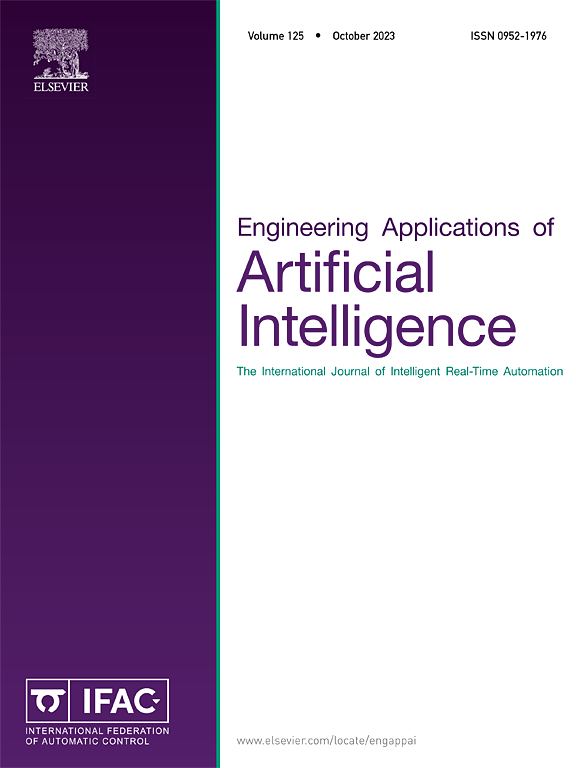Automated classification of thyroid disease using deep learning with neuroevolution model training
IF 7.5
2区 计算机科学
Q1 AUTOMATION & CONTROL SYSTEMS
Engineering Applications of Artificial Intelligence
Pub Date : 2025-02-13
DOI:10.1016/j.engappai.2025.110209
引用次数: 0
Abstract
Background:
Thyroid disease is a common endocrine disorder; its timely and accurate diagnosis is important. Using clinical and laboratory data input, we developed an artificial neural network (ANN) for thyroid disease classification, incorporating an evolutionary algorithm for network optimization.
Methods:
The proposed model combined ANN with a genetic algorithm (GA), which iteratively modified the weights and biases of the ANN architecture. The weights, encoded as genes in a chromosome and represented as one-dimensional vectors, were updated in each iteration. Binary cross-entropy loss was used as the fitness function to calculate the suitability of solutions in the genetic algorithm. The model was trained and tested on an open-access Hypothyroid disease dataset comprising multiparametric variables of 3772 samples (291 thyroid patients and 3481 controls).
Results:
Our model attends accuracy for binary classification (thyroid disease vs. normal), outperforming published models.
Conclusion:
Incorporating GA optimization into ANN enabled the model to explore diverse solutions and escape local optima more effectively, leading to better performance and generalizability. The excellent results support the feasibility of implementing the proposed model for thyroid disease screening in the clinical setting.
求助全文
约1分钟内获得全文
求助全文
来源期刊

Engineering Applications of Artificial Intelligence
工程技术-工程:电子与电气
CiteScore
9.60
自引率
10.00%
发文量
505
审稿时长
68 days
期刊介绍:
Artificial Intelligence (AI) is pivotal in driving the fourth industrial revolution, witnessing remarkable advancements across various machine learning methodologies. AI techniques have become indispensable tools for practicing engineers, enabling them to tackle previously insurmountable challenges. Engineering Applications of Artificial Intelligence serves as a global platform for the swift dissemination of research elucidating the practical application of AI methods across all engineering disciplines. Submitted papers are expected to present novel aspects of AI utilized in real-world engineering applications, validated using publicly available datasets to ensure the replicability of research outcomes. Join us in exploring the transformative potential of AI in engineering.
 求助内容:
求助内容: 应助结果提醒方式:
应助结果提醒方式:


